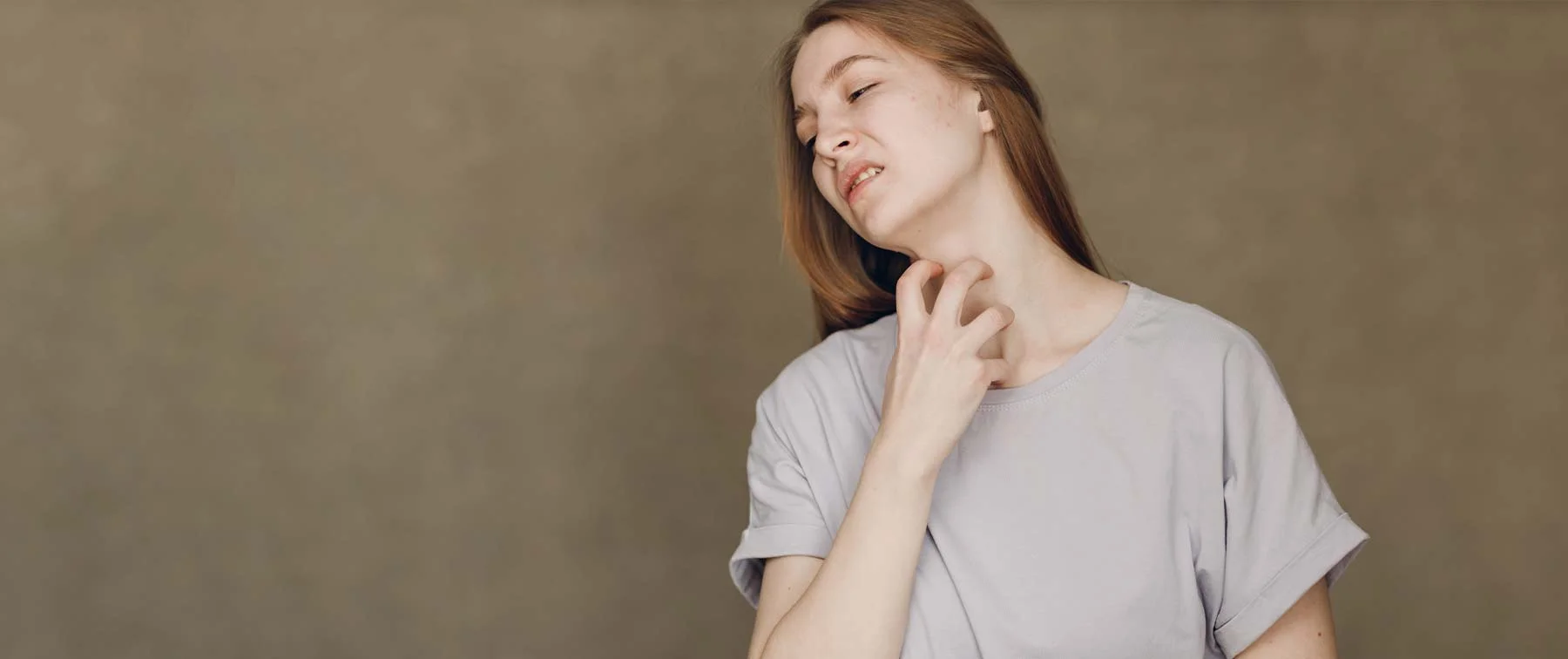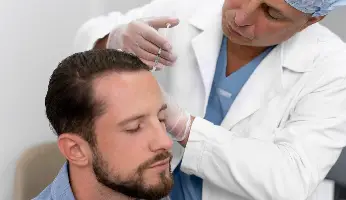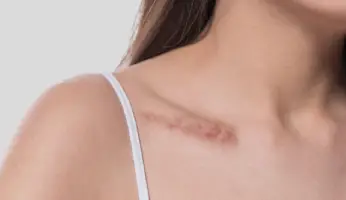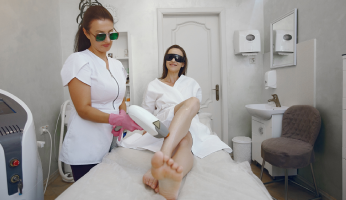
Some organisms can only survive in the human skin without proper shelter and nutrition. Such organisms provide nothing in return but can infect, injure, or cause no harm to the host or humans. Such microorganisms are referred to as skin parasites. Parasites rely entirely on another organism for survival, most commonly known as the host. They frequently benefit at the host's expense, and this form of interaction is referred to as parasitism.
Epidermal parasitic skin infections are a type of infectious disease in which parasites are restricted to the epidermis's top layer of the skin. Scabies and pediculosis are the most frequent epidermal skin infections. Pediculosis is further classified as pediculosis capitis (head lice), pediculosis pubis (also known as crabs or pubic lice), and pediculosis corporis. Creeping eruption is also one of the most common skin parasitic infections.
Read on to learn more about these common parasitic skin infections in humans with the best dermatologist in Bangalore at Charma Clinic.
Common Parasitic Skin Infections in Humans
1. Scabies
A mite invasion in the skin causes scabies. It causes little red lumps on the skin as well as acute itching. Scabies spreads quickly. It spreads through direct skin contact. It spreads quickly by:
- sexual intercourse
- Another instance of intimate physical contact
- Towels and bed linens are shared.
- Sharing of clothes and dishes.
What Causes Scabies?
Mites cause scabies to burrow beneath the skin. They do not fly or jump. They put their eggs below the skin. The eggs hatch and become adults. Over the next 1 to 2 weeks, they will dig new burrows. The mites will die in 4 to 6 weeks. An allergic reaction to the mites' saliva or faeces causes the rash and itching.
Scabies mites spread quickly. Scabies should be treated immediately to prevent the mites from spreading.
Scabies can affect individuals of various ages and socioeconomic backgrounds. It is widespread throughout the world. Scabies is more prevalent in children and adolescents than in adults. It's also more common if a person lives in close quarters with others, such as in a college dorm or nursing home.
At Charma Clinic, scabies treatment in Bangalore is offered by a skin expert and provides the patient with expert treatment that helps them attain healthy and beautiful skin.
What are the symptoms of scabies?
Scabies symptoms may appear 2–6 weeks after interaction with an infected person. The rash can occur in 1–4 days if someone already has scabies.
Symptoms may appear differently in each individual. They may include the following:
- Commonly severe itching that gets worse at night
- Rash accompanied by tiny pimples or red lumps
- Mites' burrows are tiny lines on the skin's surface.
- Body sores induced by scratching
- Skin that is scaly or crusty in difficult situations
- The rash develops in adults on the hands, between the fingers, wrists, belt line, thighs, belly button, groyne area, around the breasts, and armpits.
Treatment for Scabies
- Everyone in the family, as well as all sexual partners, should be treated at the same time. A person is no longer contagious after the first treatment.
- Scabies is typically treated with a dermatologist-prescribed cream or lotion. The mites are killed as a result of this. When using a prescription lotion or cream:
- Follow the directions provided by the doctor and pharmacist. Inquire about the precautions for using this medication.
- Apply the cream or lotion when the skin is cool and dry. It should not be used after a hot shower or bath.
- Apply the cream or lotion to the entire body from the chin down. The neck, palms of hands, soles of feet, groin, and under fingernails are all included.
- Do not exceed the recommended dosage.
- Apply the cream or lotion for the recommended amount of time. It is generally between 8 and 14 hours. Please don't leave it on the skin for any longer than necessary.
- After the treatment, only wear clean clothes.
- After washing the hands, reapply the cream or lotion.
- Wash the nipples before feeding if a woman is breastfeeding. After breastfeeding, reapply the cream or lotion.
- If instructed, apply the cream or lotion again one week later.
2. Lice
Head lice are parasitic insects that feed on the skin. They feed on people's blood and live on their heads. Itching from head lice can be excruciating. Body lice and pubic lice are two additional types of lice. This health tip will concentrate on head lice.
Head lice spread quickly. They spread through close bodily contact and sharing clothing and other personal things. Coats, caps, hairbrushes, and combs are examples of such items.
The most typical symptom of head lice is itching. Itching can be excruciating, especially at night. Lice or their eggs (nits) are most commonly found in the hair, behind the ears, or on the neck. They can even be noticed in the brows and eyelashes. If one is looking for the best lice treatment in Bangalore, one can contact the skin experts at Charma Clinic.
Treatment
Treatment options depend on the patient's symptoms, age, and general health. It will also depend on the severity of the problems.
Lice can be treated with the expert treatments offered by the best doctors for head lice treatment in Bangalore at Charma Clinic. The child's or patient hair will be treated with a medicated cream rinse or shampoo. Many head lice medications are available without a prescription. If the OTC medications do not work for the child, their healthcare professional may prescribe medication.
Please consult a healthcare practitioner at Charma Clinic to determine which rinse or shampoo suits them. Use no more than one type of treatment at a time. If one treatment does not work, try another or seek assistance from a healthcare expert.
3. Creeping Eruption
Hookworms induce a skin condition called creeping eruption. Sandworm disease is another name for this condition.
Severe itching, blisters, and a red bending rash are all symptoms of a creeping eruption. The rash might spread at 1/2 to 3/4 inch per day. The infection usually shows itself in body areas exposed to contaminated sand. The feet, legs, buttocks, and back are examples.
What causes the creeping eruption?
Hookworms are responsible for creeping eruptions. Hookworm eggs have been found in infected dog and cat faeces. The eggs hatch and mature into worms. People can contract the infection through skin contact with the worms in the stool. Hookworms can be found in wet, sandy areas. Most people employ this condition by walking barefoot on contaminated ground in hot climates.
If one is looking for creeping eruption treatment in Bangalore, one can contact the skin experts at Charma Clinic.
What are the symptoms of a creeping eruption?
The rash usually appears 1–5 days after being exposed to hookworms. However, it is not uncommon for it to take more than a month to appear. Each individual may experience slightly different symptoms.
Symptoms could include:
- Winding
- Snake-like rash
- Itching
- Blisters.
Treatment for hookworms in Bangalore
Antiparasitic medications can treat a creeping eruption. They can be administered orally (by mouth). They can also be used as a topical cream directly on the rash. This ailment resolves independently because hookworms cannot survive in human skin for long. It will disappear in weeks or months, even if it is not treated.
Prevention
There are various things one can do to reduce their chances of developing a parasite infection:
- Use a condom when having sex
- Hands should be washed regularly, especially after handling raw meat or faeces
- Cook food until it reaches the desired internal temperature
- When travelling, drink clean water, including bottled water
- Avoid drinking from lakes, streams, or ponds.
If one is suffering from skin redness and skin infection in Bangalore, they can consult the skin experts at Charma Clinic. One can visit the clinic to get healthy and parasite-free skin today!




